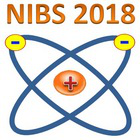Speaker
Mr
Anton Kolmogorov
(Budker Institute of Nuclear Physics)
Description
The polarized beam for RHIC spin physics experimental program is produced in the Optically Pumped Polarized H– Ion Source (OPPIS). The present RHIC OPPIS produces 0.5–1.0 mA current in 300 μs pulse duration. The polarized H– ion beam of 35 keV beam energy out of the source is accelerated to 200 MeV in a linear accelerator for strip injection to Booster. The H– ion pulse is captured in a single Booster bunch, which is accelerated in the Booster and then transferred to the AGS, which is accelerated to 24.3 GeV for injection to RHIC.
The RHIC polarized H– ion source had been upgraded to higher intensity and polarization by using a very high brightness fast atomic beam injector developed at BINP, Novosibirsk. In this injector the proton beam is extracted by a four-grid multi-aperture ion optical system and neutralized in the H2 gas cell downstream from the grids. The proton beam is extracted from plasma emitter with a low transverse ion temperature of ~0.2 eV which is formed by plasma jet expansion from the arc plasma generator. The multi-hole grids are spherically shaped to produce “geometrical” beam focusing. The atoms of the beam formed by the injector get into a strong magnetic field, where they lose the electron in the helium target, and then they capture the polarized electron in the target of rubidium vapor. The transfer of the spin projection from the electron to the nucleus of the atom occurs in the region of Sona transition at the exit from the magnetic field. Negative hydrogen ion beam is formed when electrons are captured by the atoms of a polarized beam in a stationary recirculating sodium vapor target.
Effective transportation of nonpolarized negative hydrogen ions formed during charge exchange of a high-brightness proton beam with ballistic focusing in a hydrogen charge-exchange target was observed in experiment. A beam of protons with an energy of 10 keV, a current of 4.7 A, an emission current density of 470 mA/cm2, an angular divergence of 10 mrad, and a focal length of 200 cm was formed at 1 Hz frequency in the fast atomic beam injector. The value of H– ion current passing through a 2 cm diaphragm located at a distance of 200 cm from the emitter was 75 mA.
Primary author
Dr
Anatoli Zelenski
(Brookhaven National Laboratory)
Co-authors
Dr
Alexander Ivanov
(Budker Institute of Nuclear Physics)
Mr
Anton Kolmogorov
(Budker Institute of Nuclear Physics)
Dr
Vladimir Davydenko
(Budker Institute of Nuclear Physics)

